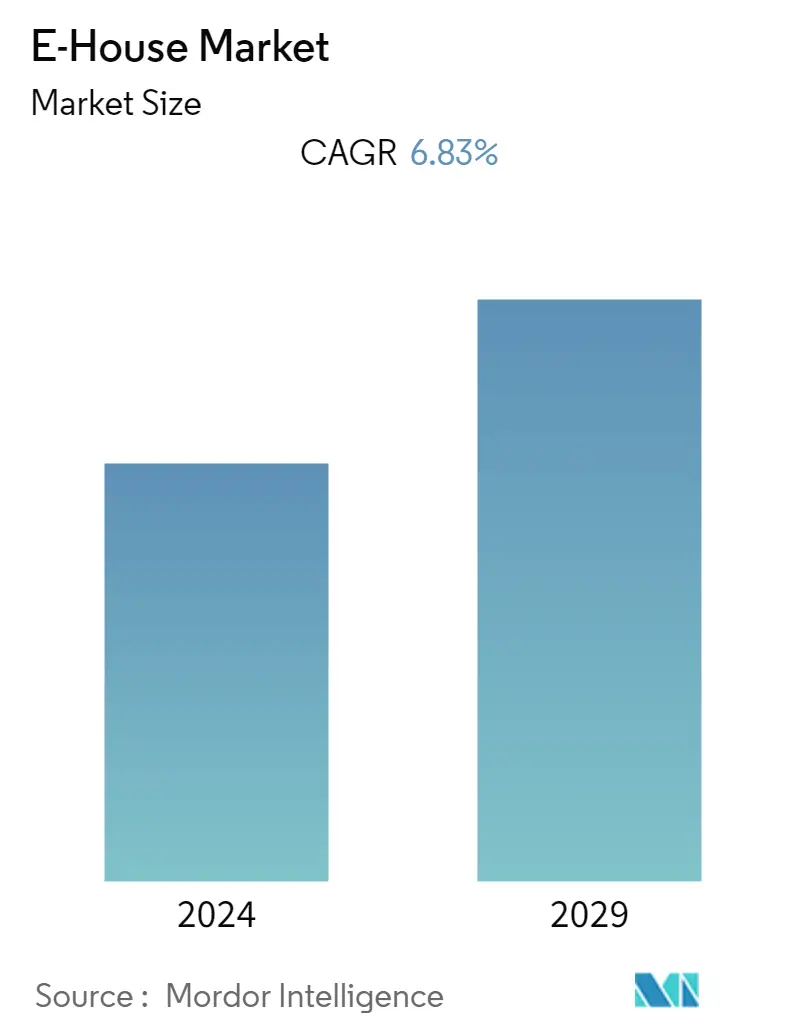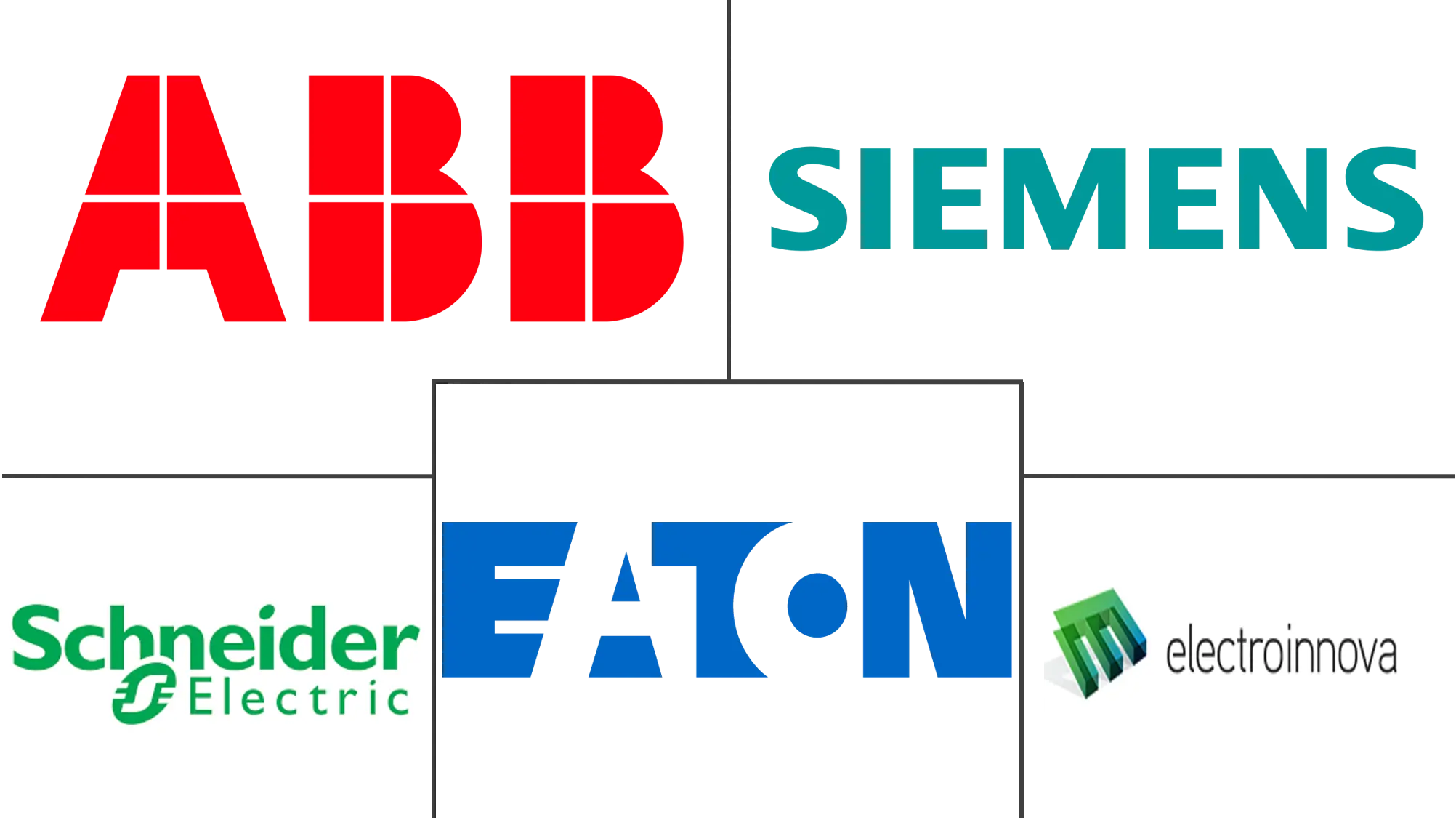Market Size of E-House Industry

| Study Period | 2019 - 2029 |
| Base Year For Estimation | 2023 |
| CAGR | 6.83 % |
| Fastest Growing Market | Asia Pacific |
| Largest Market | North America |
| Market Concentration | Low |
Major Players
*Disclaimer: Major Players sorted in no particular order |
Need a report that reflects how COVID-19 has impacted this market and its growth?
E-House Market Analysis
The E-House market is expected to reach a CAGR of 6.83% during the forecast period of 2021 and 2026. E-house is customized pre-assembled and pre-tested modular power substations. By adding more intelligence to e-houses, it consolidates electrical and process control systems into one solution. Today more EPCs (Engineering, Procurement, and Construction) are using an intelligent packaged power system and expected that during the forecasted period, it supports the market growth. It can further help to reduce the design time and costs. Further, a unified system allows a transition from hard-wired to a networked approach with a reduction in material, labor, and documentation costs. It also supports end-user by one system for control, visualization, archiving, and reporting, which allow them to access real-time data from intelligent electrical devices to help operations and maintenance personnel make smarter faster decisions.
- Adoption in the replacement of SF6 to lower environmental impact is driving the market. For decades, the unique properties of SF6 (Sulfur Hexafluoride) have made it popular as insulation and switching medium for electrical switchgear in e-house. However, SF6 is greenhouse gas, and its life-cycle management costs are incurred, particularly when the decommissioning of aging substations is on the rise. In recent years, ABB has been conducting research for alternatives with lower environmental impact with arc interruption and insulation properties similar to SF6. This mission has now been executed, and the world's first gas-insulated switchgear (GIS) pilot installation to use a new gas mixture has recently been commissioned in Switzerland.
- Further global manufacturers of medium-voltage switchgear are now seeing increased exposure to product stewardship requirements as a part of new equipment purchase contracts. Product stewardship is loosely defined as an elemenSF6t of Environmental, Health, and Safety (EHS), which includes a product-centered approach to environmental protection focusing on reducing the environmental impacts of products. These all factors support the drawback of SF6, and introducing new alternatives further helps to grow the demand of e-house in the market.
- The digitalization of e-house is driving the market. The digital revolution is in progress and has already taken great steps in the energy segment, and it's bringing immense opportunities and benefits. The impact of digitalization on electrical distribution is intended to improve operations and increase flexibility throughout the power value chain, from generation to customer relationship management. Already today, installing digital switchgear contributes greatly to increasing operation efficiency by optimizing switchgear footprint in the substation room and by using the energy efficiently for switchgear operation.
- For instance, in medium-voltage switchgear at 11 kV consisting of 30 panels, the width can be reduced by approx. 7% and switchgear energy consumption can be reduced by approx 300MWh during its lifetime. Today governments and regulatory bodies encourage smarter measuring systems and greener standards for generation and consumption and to use resources in a more efficient way. These initiatives create a demand for smarter distribution equipment such as digital switchgear, which assists in the growth of the market. ABB AbilityTM platform not only gives the possibility to link separate e-houses worldwide but also to gather data and conduct detailed, performance-enhancing analytics.
- However, the impact of COVD-19 affected e-house market growth. The COVID-19 pandemic has shattered oil demand, sunk prices, and is posing a significant risk for those involved in oil extraction and processing. The disruption to Chinese oil has affected around the world. In February, the IEA noted demand had fallen by 435,000 barrels per day (BPD) in the first quarter of this year alone, which is the first quarterly contraction in demand in more than a decade. With the industry shut down and no new industry expansion and development, the demand for e-house has shattered significantly.
- However, OPEC+ agreed to curtail oil production by approximately 10.0% (9.7 million barrel/day) by May 1. Further, the tight working conditions of mining facilities means workers are at the greatest immediate risk, and mining operations around the world have been placed into shutdown. For instance, South Africa's platinum mines have been idled for the past three weeks since the last week of March 2019. Such instances highly affect the demand for mobile substation e-house. However, the Government of South Africa has agreed to allow the mining sector to operate at up to 50% of its production capacity during the nationwide lockdown, which can significantly cater to the demand.
